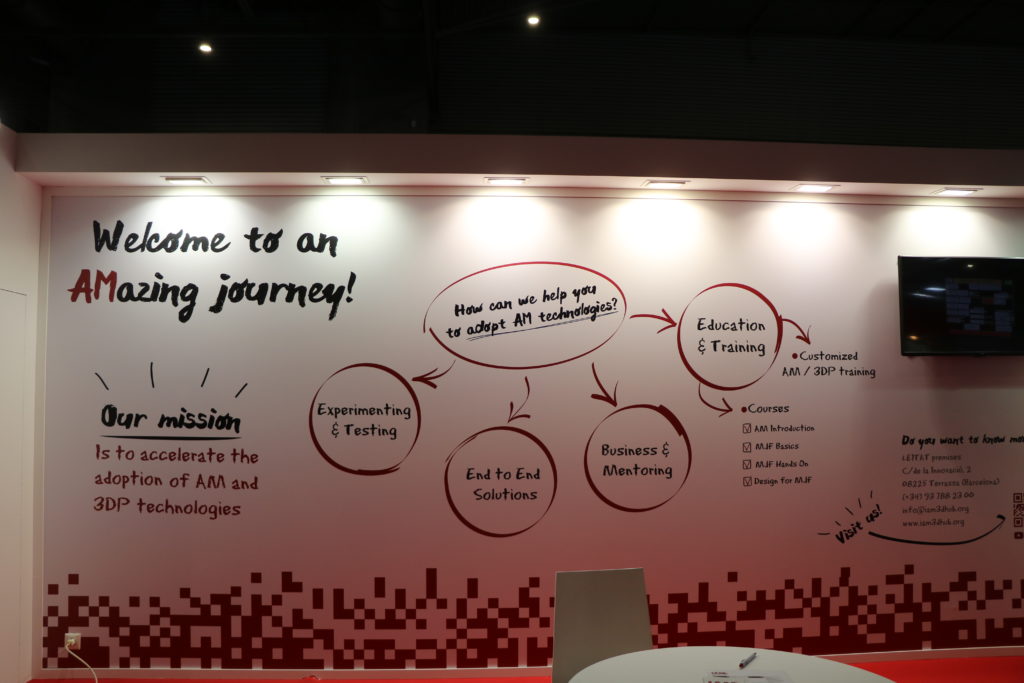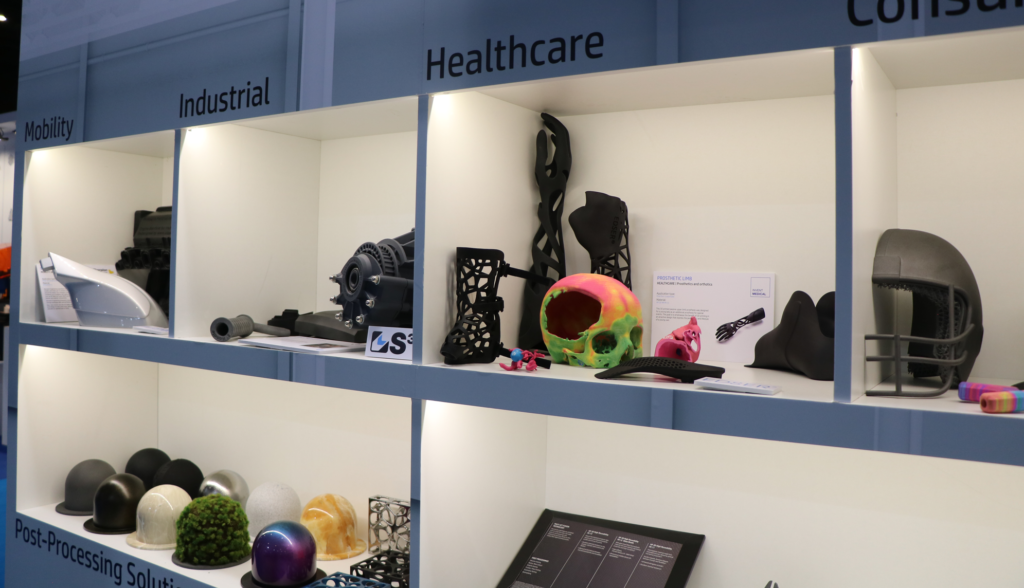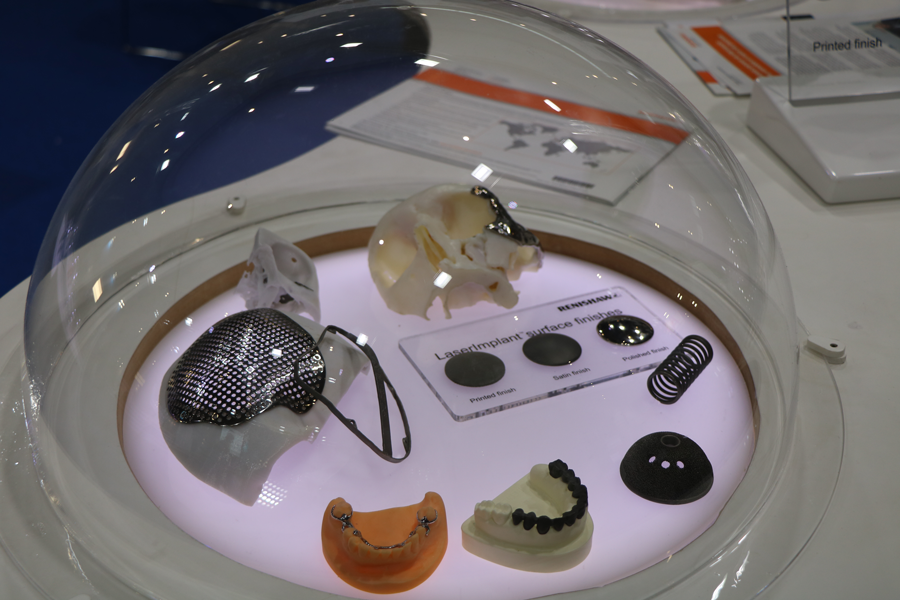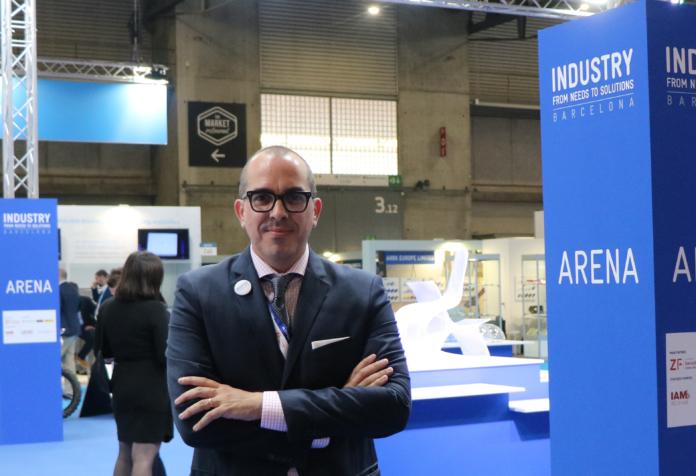If you have any interest in technology, then Barcelona is the right place to be now. Throughout this week, the city is holding a mix of congresses and exhibitions dedicated to new technologies: IoT solutions, Automation & Robotics, Transplast, Moulds & Dies, Connectivity & Data, Machines Tools and IN(3D)USTRY. In a nutshell, the entire technological universe of Spain in a single place.
Among this list of attractive exhibitions, IN(3D)USTRY was the main exhibition that raises 3D ADEPT Media’s interest in the show. A few months ago, Fira de Barcelona, the organizer, announced a new name for this 4th edition of the show and the addition of two new sectors: advanced manufacturing and the machines-tools area.
All these new features looked interesting, yet intriguing with regards to the very first edition of the show, which was to raise awareness on the possibilities offered by 3D printing/Additive Manufacturing. Over time, the strategy of the organizer has gradually evolved. The first two editions marked the introduction of Additive Manufacturing technologies into the Spanish market, the third edition saw the focus on the theme “From Needs to Solutions”, the opening of new sectors and the internationalization of the show, and this fourth edition also saw the addition of other areas.
First (wrong) impressions of the show
When we first came into the new hall of this fourth edition, we were impressed by the large size of the hall, capable of hosting all these companies from various sectors. However, the arena dedicated to 3D printing companies only hosted about 20 companies, mainly from Spain or LATAM, both resellers and manufacturers. So far, there was not a significant difference compared to the third edition.
Our first interview was with a representative from a 3D printer manufacturer (whose name will not be mentioned upon request of the source), who was present for the first time at INDUSTRY. At first glance, he did not expect such a mix of sectors and did not seem to understand its relevance with regards to the evolution of the show. Has Fira Barcelona wholly given up on fostering the adoption AM/3D Printing? Everything seemed to indicate that this was the case.
We, therefore, decided to discuss the strategy behind the continuous addition of new sectors to the show with Miquel Serrano, the director of the show.
Serrano first recalled the vision he has for the show: as far as AM is concerned, “we do not only want to show 3D printers. Our goal is to show real use cases that will enable users to leverage AM. Last year, for instance, we added new sectors such as Robotics and the addition of these sectors showed that 3D printing is limited to meet the requirements of this market. AM can be a part of a manufacturing process, but it does not constitute the whole value chain.”
What exactly does it mean for the evolution of AM in Spain?
“Well, compared to the UK & Germany, we still have to help companies to understand AM. We do not give up on this mission. The presence of companies like IAM3DHUB proves that. Spanish companies need a sort of 101 coaching sessions that will enable them to understand AM, how to use it and the technology possibilities for their business or project. That’s what IAM3DHUB alongside other companies do, and that’s the reason why they are here.”

Will the addition of new sectors not slow down the development of AM – especially the addition of the machines-tools area?
“First, it should be noted that companies from the “machines-tools” area will exhibit on this show every two years. We know AM is not evolving as fast as we thought it would be. Our aim is not to slow down the evolution of the technology but rather to enable its development through conventional manufacturing processes. However, reality shows that visitors are still afraid to harness AM that they see as a futuristic technology. The strategy, therefore, is to raise visitors’ interest in the show with something they perfectly know: conventional manufacturing processes. By coming here to see conventional manufacturing processes, there is a great chance that they end up discovering AM. Moreover, allowing those two types of technologies to co-exist for the duration of an event should not only be an advantage for AM companies. Indeed, AM is said to be a technology that advances at a fast pace. By enabling real dialogue between those players, our aim is also to give a chance to companies that specialize conventional manufacturing techniques to learn from AM companies the key drivers that might enable them to develop their manufacturing processes – “at such a fast pace” –
In the long-run, we aim to establish a real AM knowledge in the Spanish market and enable these technologies to evolve together.”
You said you strive to establish a real AM knowledge. How do you do that?
Through use cases and topics discussed in congresses on the one hand, on the other hand, through visitors. Like last year, visitors can experience a wide range of AM possibilities through use cases showcased in the INDUSTRY Arena. Our exhibitors have showcased for instance real medical 3D printed models, real 3D printed parts designed and manufactured for the automotive sector, art and fashion.

As for topics, although the majority of issues that have been tackled, brought out a good mix of knowledge in various sectors of activity, a key focus was made on Healthcare & 3D printing”, – a topic that already prevailed in last year’s show.

What about the visitors? Can you profile the type of visitors that attend the show this year?
We have had a variety of visitors this year. It is not yet possible to give exact data from the show. But, at first glance, we notice that the robotics sector and AR & VR sectors mainly attract young people. Companies from these fields aim to educate young people as soon as possible so that at the end of their studies, it becomes easier to hire them.
While the machines-tools area mainly attracts advanced users, the AM area saw the proliferation of potential users and beginners in the field. These users include a high rate of decision-makers that would like to know more about AM and how to implement it into their business and engineers, that do not only use the technology but can also influence the decision-making process.
To sum up, at the beginning of this edition of INDUSTRY, we were quite skeptical about all these new additional features and their relevance in the adoption of AM in Spain. Serrano’s explanations seem logic and justified. But how did the AM exhibitors see this change? Serrano’s explanations needed to be supported by real facts, hence our interviews with several AM companies that exhibit on the show. #StayTuned
Interview conducted by Laura Depret & Kety Sindze. All pictures by Laura Depret from 3D ADEPT Media.
If you want to join INDUSTRY 2019, you can use this free code FC4F0FB0 to secure your free ticket.
You can now post free of charge job opportunities in the AM Industry on 3D ADEPT Media. For further information about 3D Printing, follow us on our social networks and subscribe to our newsletter : Facebook, Twitter, LinkedIn & Instagram !Would you like to be featured in the next issue of our digital magazine? Send us an email at contact@3dadept.com






